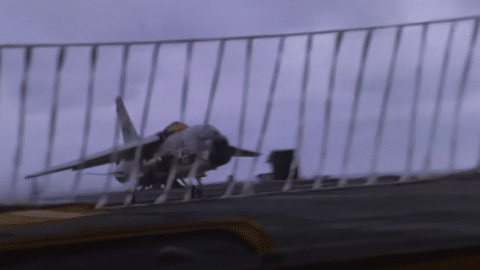
YouTube / Not What You Think
Under standard operating procedures, pilots apply full throttle at touchdowns during carrier landings. If they catch one of the arresting wires, they come to a complete stop. If they fail to do so, the full throttle is enough for them to become airborne and try again.

However, this wasn’t possible in the early days of carrier operations. Carriers then didn’t have angled decks, instead having a relatively flat top design. This meant that airplanes landed in front of the parked planes, giving the pilots almost no room for error.

To “fix” the issue, emergency flight deck barriers were installed at the end of the landing area. These barriers were around 3 feet tall and were only lowered after a successful landing to facilitate parking.

Nowadays, barricade netting is used for emergency landings. The mesh, which resembles a tennis net, is approximately 20 feet tall. When the plane hits the barricade, it gets caught by the engagement straps, which transfer the load to the barricade engine below the deck.

You can check out how it works at the 2:55 mark!